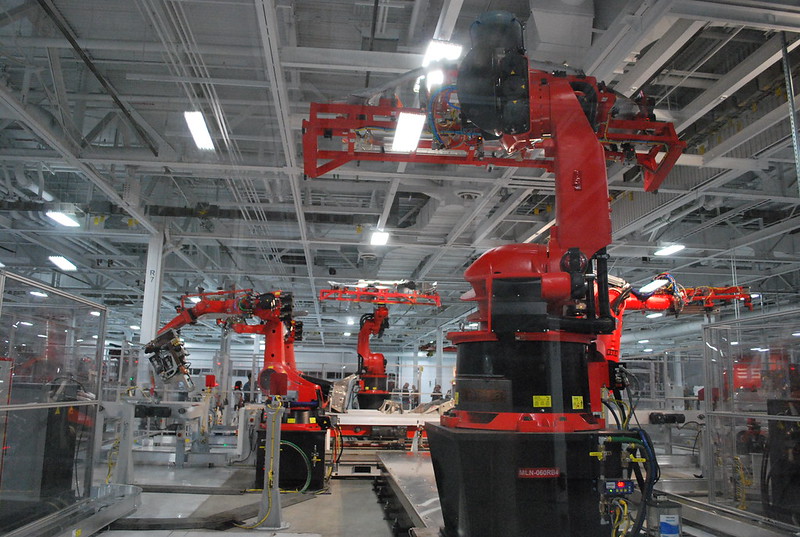Guarding Against Recession: Why RTLS is a Strategic Investment for Manufacturers
Manufacturers are constantly seeking ways to insulate themselves against the impacts of recessions and economic downturns. As market volatility persists, companies are compelled to adopt forward-thinking strategies that enhance their resilience and agility. One such strategy that has been gaining traction in recent years is the implementation of Real-Time Location Systems (RTLS) in manufacturing operations.
RTLS technology provides manufacturers with a powerful tool to optimize operations, streamline processes, and fortify their businesses against economic headwinds. These systems leverage a combination of sensors, tags, and wireless communication to track the real-time location of assets, people, and equipment within a facility. The data gathered by RTLS is then processed and analyzed to deliver actionable insights that can drive operational efficiencies and strategic decision-making, as well as opportunities for automation.
More than three-quarters (76%) of manufacturers told us that they are more likely to invest in IoT because of the current economic situation. This statistic underscores the growing recognition among manufacturers of the importance of adopting innovative technologies, such as RTLS, to safeguard their operations and thrive in challenging economic environments.
So, why is RTLS a strategic investment for manufacturers in times of economic uncertainty?
-
Enhanced Operational Efficiency
RTLS systems provide manufacturers with granular, real-time insights into their operations. By knowing the precise location of assets, tools, and personnel at any given moment, manufacturers can optimize workflows, reduce bottlenecks, and minimize downtime. This newfound efficiency not only translates into cost savings but also enables manufacturers to meet customer demands more promptly, enhancing their competitive edge.
-
Proactive Maintenance and Asset Management
In an economic downturn, it becomes even more critical for manufacturers to maximize the lifespan of their equipment and assets. RTLS enables predictive maintenance by monitoring the usage patterns and condition of machinery. By detecting early signs of wear and scheduling maintenance before a breakdown occurs, manufacturers can avoid costly repairs and ensure uninterrupted production.
-
Inventory Optimization
Managing inventory levels is a delicate balancing act for manufacturers. Overstocking ties up capital, while understocking leads to missed sales opportunities. RTLS provides real-time visibility into inventory levels, allowing manufacturers to optimize stock levels and reduce carrying costs. Additionally, it enables accurate demand forecasting, ensuring that products are readily available to meet customer orders.
-
Safety and Compliance
Ensuring the safety of personnel within a manufacturing facility is paramount. RTLS can track the location of employees in case of emergencies and can assist in enforcing safety protocols and compliance measures. By monitoring high-risk areas and providing instant alerts in the event of unauthorized access, manufacturers can create a safer working environment.
-
Supply Chain Resilience
In times of economic turbulence, disruptions in the supply chain can have far-reaching consequences. RTLS equips manufacturers with the ability to closely monitor the movement and status of goods in transit. By gaining real-time visibility into the supply chain, including monitoring transit yards and warehousing facilities, manufacturers can identify potential bottlenecks or delays and take proactive measures to mitigate risks. This enhanced supply chain resilience ensures that manufacturers can meet customer demands even in the face of unforeseen challenges.
-
Data-Driven Decision-Making
Data is the lifeblood of modern manufacturing operations. RTLS provides a wealth of real-time data that can be harnessed to make informed decisions. By analyzing trends and patterns in the movement of assets and personnel, manufacturers can uncover opportunities for process optimization and resource allocation. This data-driven approach empowers manufacturers to adapt swiftly to changing market conditions, enabling them to stay competitive and agile.
-
Adaptability to Changing Market Dynamics
Economic downturns often bring shifts in consumer preferences and market demands. Manufacturers need to be agile in responding to these changes. RTLS facilitates this agility by providing real-time insights into how resources are utilized. Whether it’s reconfiguring production lines, adjusting work schedules, or reallocating resources, manufacturers armed with RTLS have the flexibility to adapt to evolving market dynamics.
Conclusion: Investing in Resilience
In a world marked by economic uncertainties, the proactive adoption of RTLS emerges as a strategic imperative for manufacturers. By investing in this cutting-edge technology, manufacturers can fortify their operations against recessions and economic downturns. The benefits extend far beyond operational efficiency and cost savings. RTLS empowers manufacturers to make data-driven decisions, enhance supply chain resilience, and respond effectively to evolving market dynamics.
Ubisense’s SmartSpace RTLS stands as a testament to the transformative power of location intelligence. With its seamless integration and robust capabilities, SmartSpace equips manufacturers with the tools they need to thrive in an ever-changing economic landscape. The investment in RTLS today is an investment in the future resilience and prosperity of your manufacturing operations.
As economic landscapes continue to evolve, the readiness and adaptability of manufacturers will be pivotal in determining their success. Embrace RTLS as a cornerstone of your strategy to navigate through uncertain times, and position your manufacturing operations for sustained growth and competitiveness.

